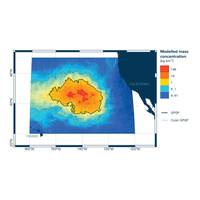
The World’s Largest Ocean Garbage Patch is Growing Rapidly
3D scans of the ocean garbage. In total, the fleet collected a total of 1.2 million plastic samples, while the aerial sensors scanned more than 115 square miles of ocean surface. “We were surprised by the amount of large plastic objects we encountered,” said Dr. Julia Reisser, Chief Scientist of the expeditions. According to the study, the vast majority (92 percent) of the mass is represented by larger objects while the other 8 percent of the mass is contained in microplastics, defined as pieces smaller than 5 millimeters. “We used to

Teledyne Optech to Present CZMIL’s Work for The Ocean Cleanup
;s survey of the Great Pacific Garbage Patch, a large concentration of plastic debris covering hundreds of thousands of square kilometers in the north Pacific. Dr. Feygel’s presentation, co-written with members of Teledyne Optech’s Marine group and in collaboration with Julia Reisser of The Ocean Cleanup Foundation and Yuri Kopilevich of ITMO University, is titled “Coastal Zone Mapping and Imaging Lidar (CZMIL) Participation in The Ocean Cleanup's Aerial Expedition Project”. During the presentation, Dr. Feygels will show how the CZMIL flew hundreds of
Researchers Prepare Oceanic Trash Clean-Up Plan
pieces of plastic to large chunks. Working for about a month, the group collected samples as small as a grain of sand and as large as discarded fishing nets weighing more than 2,000 pounds. They mapped the area, using aerial balloons and trawling equipment to locate samples, said oceanographer Julia Reisser. "We did three types of surveys in 80 locations, and now we are working on completing an up-to-date estimate of the size of the patch, making a chart of hot spots and publishing our findings by mid-2016," Reisser said. "There were hundreds of times more plastics in these



 February 2024
February 2024





